Take A Look At Books
With the advent of the superstore booksellers, such as Barnes & Noble and Borders, in the mid 1970s and their rising popularity throughout the 1990s, many small, independent booksellers have been driven out of business. The superstores have large floor spaces, huge inventories, discounted merchandise and amenities such as coffee bars, armchairs and more details that are difficult for small businesses to replicate, which is the main reason many retailers are frightened away from carrying books.
Yet, books can be a successful addition to your garden center. The key is to carry new, interesting titles in genres that will appeal to your consumer base. And it couldn’t hurt to take a few ideas from the superstores like creating a reading area and adding a couple of armchairs and a coffee table. Ultimately, adding books can help round out your product offerings and give consumers everything they need in the hobby category.
Despite the lure of electronic media (television, movies, MP3 players and video games), people are still buying books for entertainment and knowledge. According to the Association of American Publishers, net sales for the U.S. publishing industry are estimated to have increased by 9.9 percent from 2004 to 2005, reaching a total of $25.1 billion. The American Booksellers Association estimates that this year retail bookstores brought in an estimated $937 million in April, $1,041 million in March, $1,052 million in February and $2,143 million in January.
Narrow The Choices
It does not make sense to try and compete with large-scale booksellers: The variety of books they carry and the low prices they sell at are hard to beat if you are a small retailer (especially one that does not focus wholly on selling books). This means you need to find your own book-selling niche, which may mean carrying a focused selection that appeals directly to your already-established consumer base.
One option is to carry books that relate to the merchandise departments your garden center already sells. This helps ease some of the risk of carrying books: Since the other merchandise departments are already present in your garden center, you know their success rates and how much they appeal to your customers.
An obvious choice is to sell gardening and plant-related books but don’t limit yourself to the obvious. Garden centers that have found success with workshops and seminars can carry crafting books. Those that cater to birding clubs often carry birding books. The same idea applies to wine, food, pet care, jewelry and more. Simply identify which departments bring in the most customers, and stock related books. Also consider carrying a few magazines; it’s yet another way to offer more for your customers in the categories they love.
How To Pick Books
How-to books are a natural fit for garden centers, because they appeal to everyone regardless of skill level and are available for nearly every department: cooking, pet care, gardening, decorating and more. And unlike the latest bestsellers, how-to books do not move quickly in and out of popular appeal.
Of course, the types of how-to books you choose to carry depend largely on your customers. For instance, if you have garden-savvy shoppers who already know the ins and outs of maintaining their gardens, carry detailed books geared toward intermediate and advanced gardeners the kinds of books that are likely to contain plants’ botanical names. Novice gardeners will appreciate books that stick to the basics. Carrying a mix of advanced and beginner options is the best way to have something for everyone.
Keep in mind that how-to books vary in design. Look for books that are easy to navigate (especially those for beginners). A detailed table of contents, chapters, subheads, bullet points, charts and graphs help make a book easier to digest. Look at the author’s language: Is it direct and clear? Is it easy to understand?
Ultimately, you want to find how-to books that do not intimidate customers. If the books look confusing or too difficult to understand and customers do not think they can learn from them, the books will never leave your store.
Look To The Superstores
Though they may be unpopular with small retailers, the superstore booksellers know how to appeal to consumers. Visit a local Barnes & Noble or Borders regularly to see what is new in bookselling: How do they display the books? How do they market them? What do they offer to consumers that you could offer?
An easy idea to replicate is that of a comfortable reading area for customers. Clear some space near the book display in your garden center and add comfortable chairs and a table. The area will allow book browsers to relax and take their time. It can also be a place for exhausted spouses to sit while their better halves continue to shop.
If you have an in-store café, think about creating a book display (or the whole section) near the seating area. That way people will be encouraged to look at the titles as they sip their beverages. Just be aware that accidents do happen, and you may lose a few volumes due to spills.
Think Off The Shelf
Certainly, if you choose to carry books in your garden center, you will want to bring in some bookshelves to display the inventory on the selling floor: Bookshelves make it easy for customers to see available titles and choose what they want. They also aid employees in organization and restocking. But do not rely solely on the shelves for merchandising.
Try incorporating small book displays throughout the garden center, especially if you carry books that complement different departments. Imagine a stack of outdoor living books placed on the table of a patio set display. Try putting some how-to guides near displays that consumers frequently ask questions about, such as water gardening or landscaping. By cross merchandising, you let consumers know that you carry books specific to their interests (even if they never make it over to the book department).
Celebrate Books
You can stir up a love for reading in your community by holding book-related events at your garden center. Doing so will bring consumers to your store and publicize your book inventory. Try stocking regional titles and bringing the authors in for book signings. If you carry children’s books, host a reading for kids and have employees dress up as characters from the book.
Another good way to bring people in is to encourage book clubs to meet at your garden center just make sure you know how many people are expected and have enough space to accommodate them. Try giving special coupons to club members for use on store book purchases, or if you have an in-store café, give club members a discount on beverages purchased during meetings.
You can also use your employees to encourage reading. Employees can refer curious customers to select titles that will help them answer questions or give them more knowledge about a topic. Of course, this means employees will need to be knowledgeable about the book selection: Designate one copy of each title as the “store copy.” Employees can leaf through them on their breaks, and customers can thumb through them before purchasing the title. Eventually, you can sell these at a reduced rate (because they will likely see a lot of use).


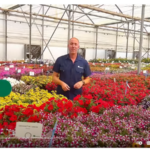





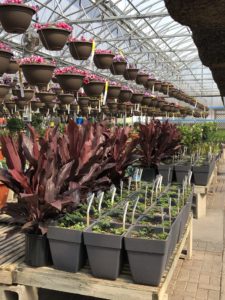
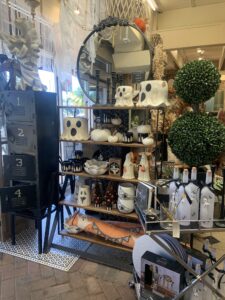
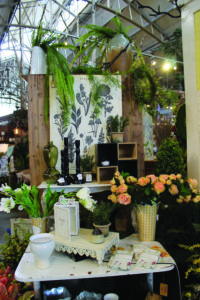
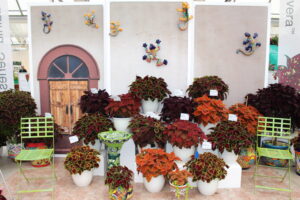
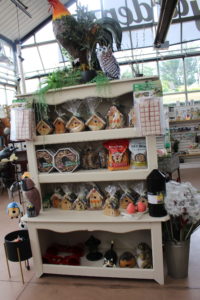
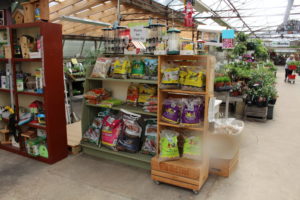
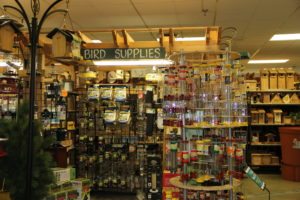



 Videos
Videos





